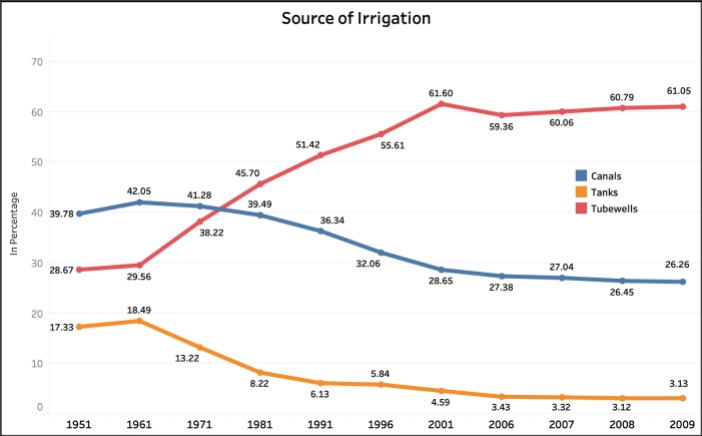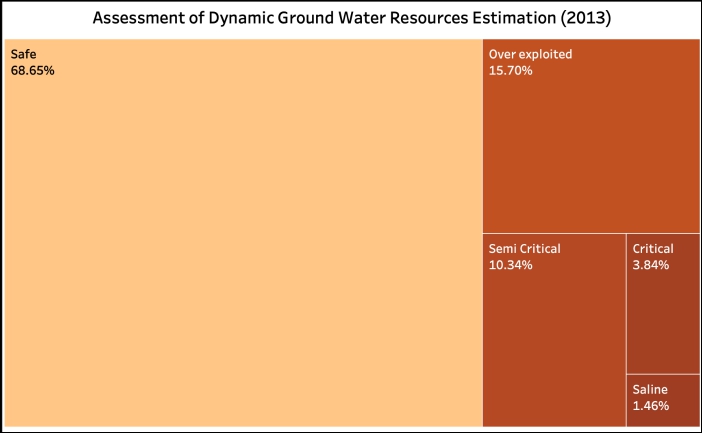With major metros facing a severe water crisis, India is staring at a looming water crisis. Here is an overview of the crisis we face.
[orc]
Union minister for the newly formed Jal Shakti Ministry, has recently stated that the water shortage being faced by India is a media hype. This is one of the many statements given by political leaders across the spectrum within the central and state governments, which play downs water crisis in the country.
But what do the numbers have to say about this? Have we reached a crisis situation?
The NITI Aayog’s report
The NITI Aayog’s Water Index Report, released in June 2018 agrees with the potential threat we face with regards to water availability in India. In the executive summary and background of the report, the report states that :
- 600 million Indians face high to extreme water stress
- 2 lakh deaths every year because of lack of adequate access to safe drinking water
- 70% of water is contaminated & India ranks 120 out of 122 in water quality index
- The projected demand for water by 2030, could be double the current availability.
- Potential loss of GDP by 6 % due to water scarcity.
These numbers do present a grim picture, pointing towards India’s looming water crisis.
Depletion of water resources
The geographical diversity that India has, is also reflected in Indian water systems. The North and North East regions of India have access to rivers fed by the Himalayan glaciers and are considered as perennial rivers.
On the other hand, peninsular India has rivers which are dependent on monsoon rains. Any delay or less rainfall has a direct impact on the available water resources. This is where ground water acts as a buffer for variable monsoons.
A World Bank report of 2012, states that India uses approximately 230 cubic KM of ground water, which happens to be 1/4th of the global ground water utilization.
The report further states that nearly 60% of the irrigation and 80% of the drinking water requirements in India are met through ground water. Over the years, the dependence of irrigation on ground water has increased, which is evident from the rise in the share of tube wells as a source of Irrigation, when compared to canals and tanks. The unpredictable & variable monsoons over the years has further increased the dependence on ground water.

Apart from irrigation, there is an increase in the dependence on ground water for drinking water purpose rather than on the other surface water alternatives. Government’s inability to supply water from the rivers has increased the use of ground water as a drinking source.
One out of every six assessed ground water units is over exploited
This excess dependence & utilization is fast resulting in the depletion of ground water resources. The rate of depletion of nearly 28% of ground water units is more than the rate of replenishing them as per a report of the Central Ground Water Board (CGWB).
As per the latest assessment of ‘Dynamic Ground Water Resources (2013)’, released in the year 2017, about 30% of the assessment units are in the semi-critical to over exploited category. The assessment categories are based on the following criteria.


Out of the 6584 units assessed, 68.65% were found to be safe, 15.7% over exploited, 10.34% semi critical and 3.84% critical. Overall, close to 30% of the units were found to be in the range of semi critical to over exploited. The over exploited assessment units have increased from 14% in 2009 to 16% in 2013.
Most of the overexploited and critical units were concentrated in three parts of the country;
- North-western part of the country including parts of Punjab, Haryana, Delhi and Western Uttar Pradesh where though replenishable resources is abundant, there have been indiscriminate withdrawals of ground water leading to over-exploitation
- Western part of the country, particularly in parts of Rajasthan and Gujarat where due to arid climate, ground water recharge itself is limited leading to stress on the resource
- Southern part of peninsular India including parts of Karnataka, Andhra Pradesh, Telangana and Tamil Nadu where due to poor aquifer properties, ground water availability is low.
Contamination of available water resources
Apart from the depleting water resources, the availability of non-contaminated water for usage is major issue contributing to the water crisis in India.
NITI Aayog’s report in 2018 with regards to water management, states that the total water resource (Surface water + Ground water) available in India is 1,869 billion cubic meters (bcm) of which only 690 bcm water is usable, since rest of the water is contaminated.

India is ranked 120 among 122 countries in respect to water quality. The problem of water contamination is spread across both the ground water and surface water resources in India. Ground water as well as surface water (rivers, lakes) etc. are effected by various forms of pollutants as per various reports of CGWB and the Central Pollution Control Board (CPCB).
Industrial wastage, sewage, fertilizers etc. are few of the common sources which contaminate water in India. Fluoride, Arsenic, Nitrate etc. are few of the chemicals whose presence is creating health problems in India. Especially fluorosis has been rampant in many districts across different states. More than 10 million people are still affected by fluoride in drinking water as per government data as of December 2017.
Are we staring at a Drought this year?
As per the Drought Early Warning Systems (DEWS) , nearly 44 % of India are under drought conditions (Abnormally dry to exceptional dry). The major shift is observed in ‘exceptional dry areas’, which is currently is at 4.80% compared to 0.68% around the same time last year (Data from DEWS as of 19th June, 2019)
As per the data from IMD, India has witnessed the second driest pre-monsoon season in the last 65 years with 99 millimetres of rainfall during March’2019-May’2019.
Also, as per recent bulletin by Central Water Commission (CWC), 71 of 91 reservoirs across India have recorded a downward shift in the water levels.
As per the report by NITI Aayog, 21 Major cities of India will run dry by 2020. We are currently witnessing this situation in Chennai, with New Delhi also predicted to be having very less ground water reserves.
A holistic action plan for long term solutions is the only way forward.
The water crisis and drought situation in India is built up over the years. The lack of good monsoons across the decades have increased the reliance on ground water, but its injudicious use has complicated the situation.
India has had phases of less rainfall during monsoons, but we survived those phases due to the available water resources. The depleted water resources have now removed that buffer and any variance in rainfall is resulting in a major deficit.
The inability to store rainfall, due to improper sanitation infrastructure also aggravated the situation. The contamination of the waterbodies has further reduced the amount of usable water. All these have compounded to the larger problem on hand.
Creating a Composite Water Management Index is a step in the right direction, which would enable to have reliable data and monitoring mechanism on water resource management. Any steps taken by the government need to focus on each of these problem to be able to manage the future demand of water.
Featured Image: Water Crisis in India


